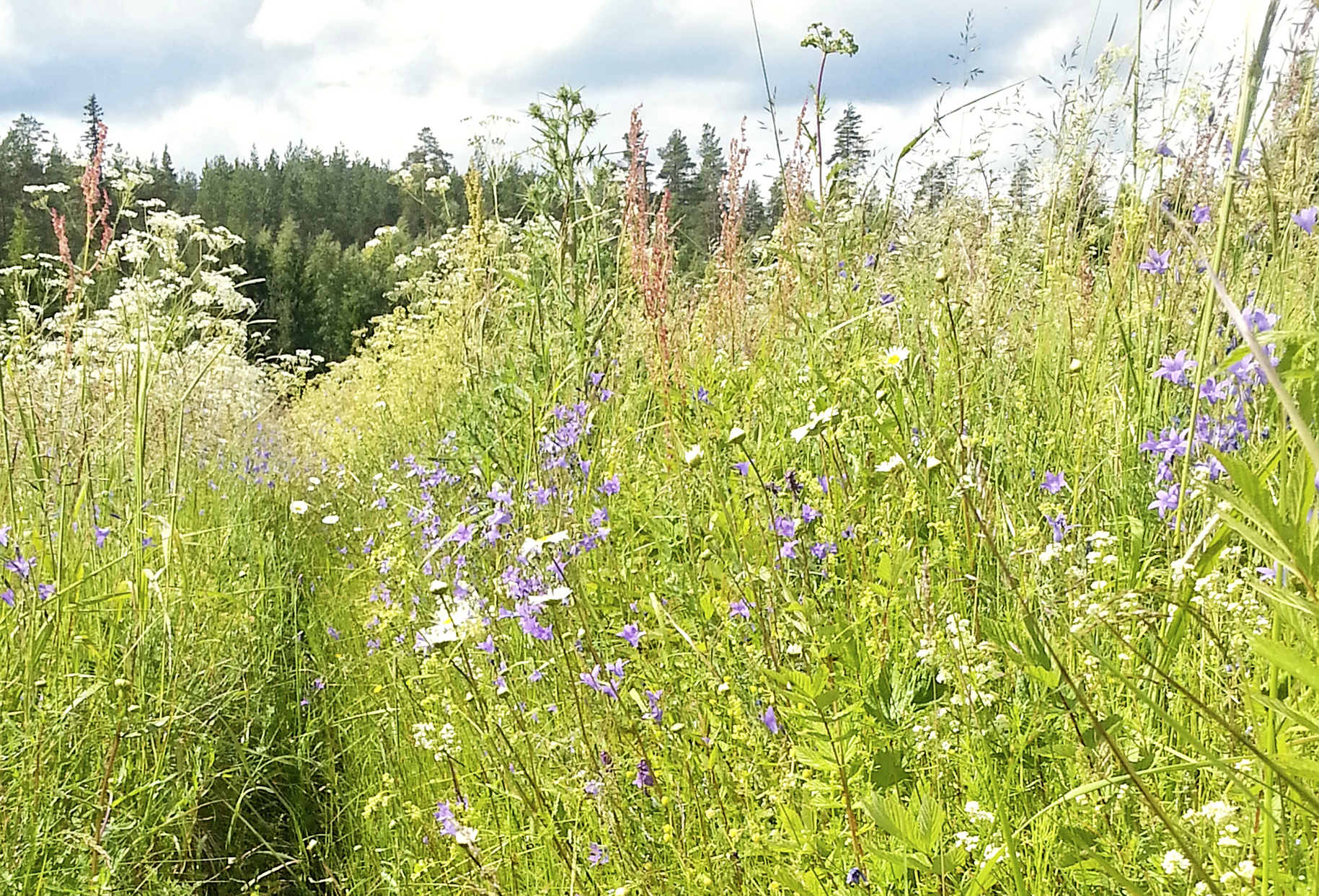The most important aim of the support is to increase the number of traditional sites and inspire landowners to maintain and manage the landscape and natural values in transmission line areas.
“Fingrid’s goal is to have the land under transmission lines utilised for people to enjoy and for the good of nature. No one benefits from a wasteland. That’s why we have made idea cards for landowners to encourage different land use methods. Restoring or creating a traditional biotope is one of these methods,” says Fingrid’s Specialist Tiina Seppänen.
Active management of transmission line areas can develop biodiversity and traditional environments that are important to the landscape.
“Traditional biotopes, such as meadows and pastureland, are threatened. By managing the area, we can increase the variety of species and landscape values while encouraging recreational use of the area.”
Consulting is available to create a management plan
In order to receive support, the area must be valuable in terms of landscape and nature and be located in a transmission line area. The area must be managed according to a plan compiled in advance.
“We support the development of a management plan for the area and provide monetary assistance if the criteria are met. The support is intended to serve as start-up money and cover costs resulting from things like mowing or fencing pastureland.
A landowner can ask an expert from the Rural Women’s Advisory Organisation to visit and consult on compiling a management plan by contacting Leena Lahdenvesi-Korhonen at the Rural Women’s Advisory Centre.
Support encourages people to mow and clear trees

Liisa Vahteristo and Juha Peippo received Fingrid’s support for traditional biotope management at the end of 2017. They applied for the support as landowners to manage an old field that runs through a transmission line area in Kouvola. An overgrown 1700s road bed runs across the field. The site is a historical route – an old road from Elimäki church to Värälä that is now used by hikers, cyclists, snowmobilers and horse riders.
The site met the criteria for support because there is more meadow and grass vegetation in the area than forest. The road line runs across Naaranoja, around which a mire has developed. The Linjanalusniitty meadow, the mire, Naaranoja and the nearby conservation forest form a diverse and rich natural entity that also provides a lot of different possibilities for recreational use. The entire area is some three hectares in size.
“The management plan was drawn up by an expert from the Rural Women’s Advisory Organisation and it was a lot of help. The plan included clearing trees in the area and continued mowing. The old field area will be kept free of trees and only the junipers will be left to grow,” explains Liisa Vahteristo.
Mowing will provide space for meadow plants, which will attract insects and birds.
“I would really like to see the corncrakes remain in the area, because now we hear them less often on summer evenings and this reminds me of how transient the old rural landscapes are. Traditional biotope management is important to me in many ways, because our farm dates back to the 1640s,” explains Vahteristo.
The management work has only just begun and the project will continue for several years.
“We intend to do most of the work ourselves. We still have to buy some equipment, but we’ve already dug a long ditch to improve the water economy in the area. We’re already looking forward to the spring so we can begin the actual clearing work,” explains Juha Peippo.








